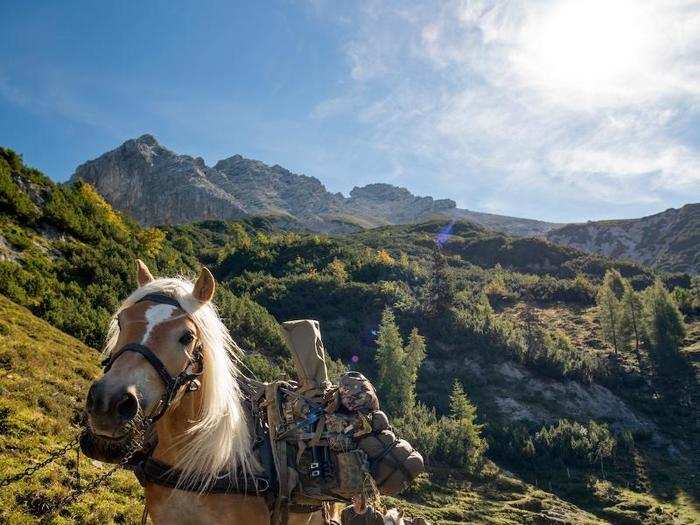

“With a sniper rifle and sometimes two rifles, hundreds of rounds of ammo, tripod, spotting scope and night optics, mountaineering gear, sleep system, and water and food, your pack easily gets over 40 kilos," one Belgian special forces soldier said.
"It is a difficult balance because snipers require a lot of specialized equipment, so you have to decide what is absolutely mission essential.”

“Each degree of angle will have an associated number value called its cosine,” Rishovd said.
“For snipers shooting at high-angles they need to measure the range to the target in line of sight and multiply it by the cosine [to] get the actual range the bullet is going to fly. Then the sniper will set his bullet drop compensation from that distance.”





"To aim at targets that are at odd angle requires getting into difficult and sometimes unstable and uncomfortable positions," he continued. "It is also difficult for the spotter to get a good line of sight. The further out you shoot the more the angle and other factors effects your shot. Operationally it is one of the most commonly used skills, so it is good to refine them here.”

You can read more about stress shoots here.

“Each country has its own tactics, techniques and procedures,” an unnamed US Army Special Forces sniper instructor said. “When we pair snipers from different countries together, or have them compete against each other, they are able to compare and see what works best."

“It is very difficult to find ranges where you can shoot at high angles,” US Army Staff Sgt. Ryen Funk said. “We don't get to practice high angle enough, so it is good to come here and get that experience.”
 Saudi Arabia wants China to help fund its struggling $500 billion Neom megaproject. Investors may not be too excited.
Saudi Arabia wants China to help fund its struggling $500 billion Neom megaproject. Investors may not be too excited. I spent $2,000 for 7 nights in a 179-square-foot room on one of the world's largest cruise ships. Take a look inside my cabin.
I spent $2,000 for 7 nights in a 179-square-foot room on one of the world's largest cruise ships. Take a look inside my cabin. One of the world's only 5-star airlines seems to be considering asking business-class passengers to bring their own cutlery
One of the world's only 5-star airlines seems to be considering asking business-class passengers to bring their own cutlery Experts warn of rising temperatures in Bengaluru as Phase 2 of Lok Sabha elections draws near
Experts warn of rising temperatures in Bengaluru as Phase 2 of Lok Sabha elections draws near
 Axis Bank posts net profit of ₹7,129 cr in March quarter
Axis Bank posts net profit of ₹7,129 cr in March quarter
 7 Best tourist places to visit in Rishikesh in 2024
7 Best tourist places to visit in Rishikesh in 2024

Copyright © 2024. Times Internet Limited. All rights reserved.For reprint rights. Times Syndication Service.